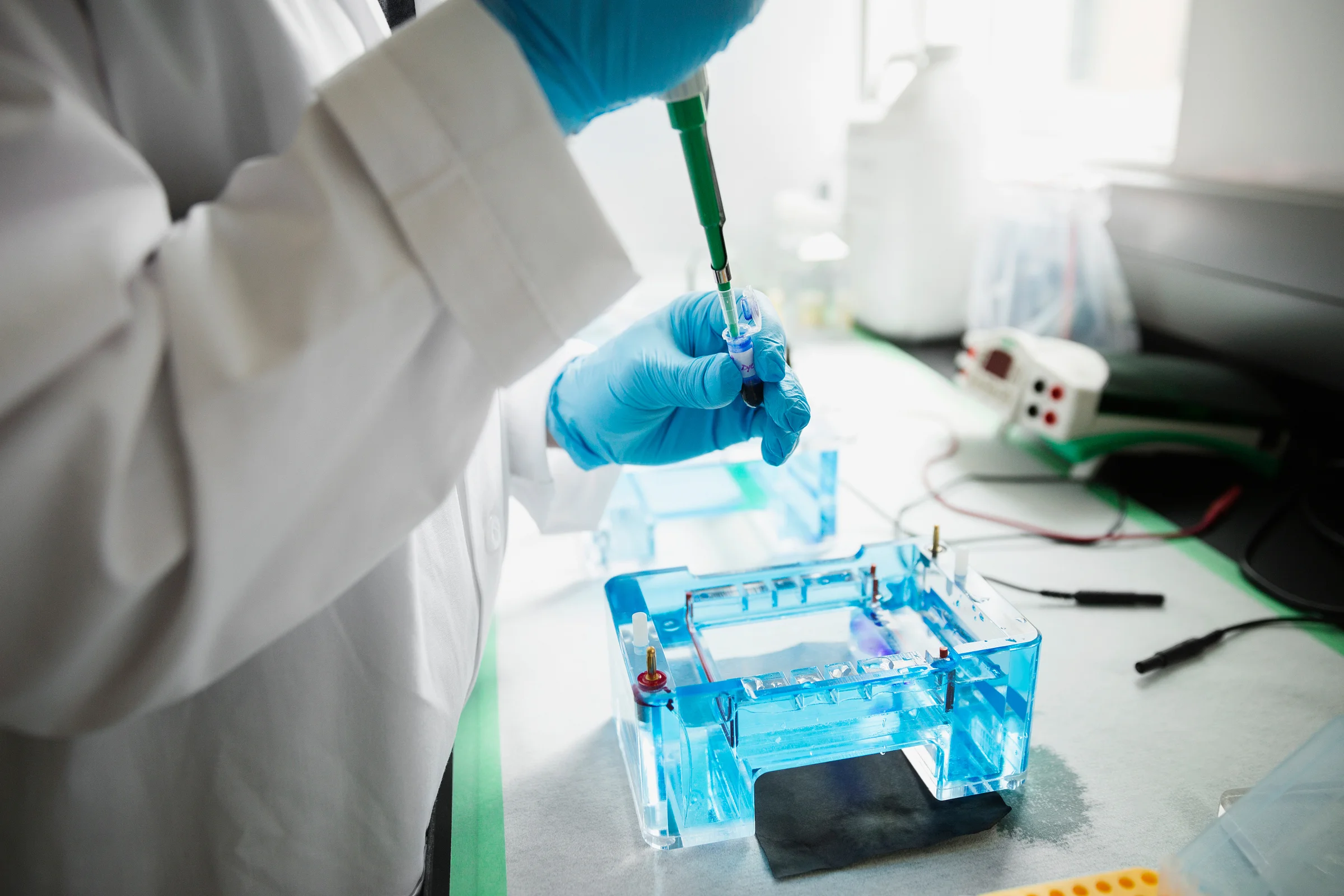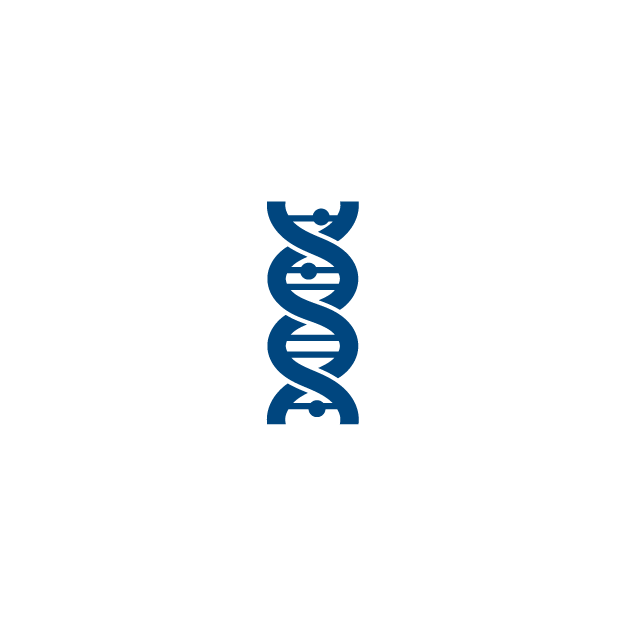AN INDUSTRY LEADER
Using breakthrough methods for whole genome comparisons, we identify novel targets that can be used to diagnose diseases syndromes. From basic discovery to field testing point-of-care diagnostic instruments, Eagle Global Scientific (EGS) is a leader in advanced diagnostics and new modalities of disease identification. Our established expertise and partnerships in this area allowed us to immediately respond to the emergence of SARS-CoV-2 and contribute to the research leading to faster and more accurate diagnostic tests.
NOVEL DIAGNOSTIC & SEQUENCING MODALITIES
EGS leads the industry in the development of novel diagnostic and sequencing modalities. In 2020, EGS recruited subject matter experts specializing in coronaviruses; our experts are actively reviewing various coronavirus testing methodologies and refining the diagnostic process to develop a kit with improved false positive and false negative rates. EGS has already established bioinformatics personnel working on emerging disease surveillance studies and outbreak investigations in multiple divisions at CDC. Our experts support ongoing MERS-CoV diagnosis and investigation, including genome characterization. In addition, EGS scientists are studying the underlying cause of Acute Flaccid Myelitis (AFM); this work includes molecular virology detection/typing/characterization, the evaluation of current diagnostic platforms, and analysis of disease burden to identify potential causes of AFM.
ADVANCED MOLECULAR DETECTION (AMD)
CDC’s AMD program introduces rapid technological innovation to join trusted methods to exciting new horizons in disease detection. By increasing critical next generation sequencing and bioinformatics capacities, CDC and state health departments gain ground in the battle to control infectious diseases.
EGS supported the Office of Infectious Diseases through a contract for bioinformatics and advanced molecular detection. Our employees assisted eight federal Principal Investigators with more than eleven distinct projects in the following Divisions:
Division of High-Consequence Pathogens and Pathology – Poxvirus & Rabies Research Branch
Division of Viral Diseases – Measles, Mumps, Rubella, and Herpesvirus Laboratory Branch
Division of Viral Diseases – Pathogen Discovery Program
Division of Viral Hepatitis
Division of Parasitic Diseases and Malaria – Malaria Branch
Some examples of EGS Bioinformatics work supporting the AMD program are:
Chief Scientist Office
59 Medical Wing
Lackland AFB, TX
Prevalence of Genetic Risk Factors for Type 2 Diabetes within the Military Healthcare Beneficiary Population
Genome-wide association studies continue to identify genetic markers (e.g., single nucleotide polymorphisms or SNPs) that confer a higher risk of obesity and Type 2 Diabetes (T2D).
Through a U.S. Air Force Contract in support of the Chief Scientist Office at Lackland AFB, EGS scientists provided critical subject matter expertise to the overall design of a panel consisting of seventeen different SNPs associated with an increased prevalence of T2D. These SNPs were selected for inclusion based solely on published preliminary data from whole genomic comparison studies and lacked any functional assays. Active-duty service members were tested using an IRB-approved protocol. The results of this diagnostic test drive a “Personalized Medicine” approach for the early detection of T2D. This project demonstrates the promise of using SNPs to determine risk level as a predictive tool to identify individuals that may benefit from lifestyle modification and preventative intervention such as the Diabetes Prevention Program.
EGS scientist collecting data from the PIMA Instrument in a remote field clinic.
Center for Global Health (CGH), International laboratory Branch (ILB)
Field-testing Point-of-Care (POC) Molecular Testing in Resource-Limited Settings
CD4 (or T-Cells) counts are used to determine when an HIV-positive patient should begin antiretroviral therapy. In many rural areas of the world, HIV is still an epidemic and determining a patient’s CD4 count is a cumbersome process.
Our EGS Laboratory Scientists evaluate novel point-of-care testing in CDC laboratories. Once baseline numbers are established in the CDC labs, our EGS employees deploy to very remote areas of many different African countries in order to evaluate the success of the Pima CD4 instrument in the field. EGS also assesses the usability of the Pima CD4 instrument after training local care providers on proper use.
The images to the left show the PIMA CD4 instrument in the CDC lab where EGS scientists optimized assay conditions. The same scientists deployed to a remote location of Tanzania to train local health care providers on its use in order to evaluate the utility in a "real world" resource limited environment. These field test provide much more than a patients CD4 counts. A wide array of internal controls provides valuable information to the developers of the PIMA instrument so they can optimize the instrument in the field.
Air Force nurses using the FilmArray® Instrument to test samples collected from patients that had symptoms of a respiratory illness.
Clinical Research Laboratory, Keesler AFB
Evaluation of FilmArray Respiratory Panel
Through support from an Air Force modernization contract, EGS scientists began to search for cutting edge diagnostic tests to quickly identify a comprehensive panel of respiratory pathogens in an instrument that could be used by technicians with limited medical training.
A technology that integrates sample preparation, amplification, detection, and analysis into one simple system that requires two minutes of hands on time and has a total run time of one hour was claimed by Idaho Technologies in the prototype device known as the FilmArray® Instrument. EGS provided the following support:
The EGS Principle Investigator drafted and facilitated the execution of the Cooperative Research and Developmental Agreement (CRADA) between the USAF and Idaho Technologies which was required before the FilmArray® Instrument was physically allowed on the USAF base property. EGS received direct approval from the Commander of the USAF laboratories.
EGS drafted the protocol to acquire nasal-washes and nasal swabs for upper respiratory samples to be collected and tested in the instrument. EGS received IRB protocol approval to test samples.
Based on the success of EGS’ protocol design at Keesler AFB, the USAF expanded these tests to multiple base sites through a process known as the Limited Laboratory Validations study (LLV).
On May 2, 2011, Idaho Technology, Inc. announced that the U.S. Food and Drug Administration issued a 510(k) clearance for the FilmArray® Instrument and the FilmArray Respiratory Panel.




